10 Best E-Commerce Personalization Examples in 2024
E-commerce personalization is no longer a luxury but a necessity for online stores seeking to create a customer-centric experience by 2024.
Statistics show that 77% of consumers have chosen, recommended, or paid more for a brand that provided a personalized shopping experience for them.
In this article, we’ll review ten actionable examples of e-commerce personalization that you can implement in your store to boost conversions and improve your customers’ experience.
TL;DR
- E-commerce personalization helps you increase your store’s conversion rates and AOV by improving the customers’ product discovery experience.
- AI’s adaptive capabilities have been the driving factor in the success of personalization for online brands in 2024.
- Popular examples of e-commerce personalization include setting up personalized product recommendations, creating tailored email campaigns, and offering a conversational experience to assist your customers in choosing the right product.
Why E-Commerce Personalization Matters in 2024
E-commerce personalization is important because you can improve your customers’ product discovery experience by showing them relevant products and offers.
Personalized e-commerce experiences help you increase your store’s sales volume, conversion rates, and average order value (AOV).
By delivering a tailored shopping experience in the form of personalized content, products, and offers, your business can build deeper connections with your customers, driving loyalty and conversions.
💡 AI, with its adaptive capabilities, has been the driving factor in the success of personalization for online brands in 2024.
The technology lets you set up an algorithm that works independently to create the logic and business rules that decide the personalized displayed content.
➡️ Personalization can now drive e-commerce success by offering data-driven product recommendations, customized landing pages, and a conversational experience (more on that later).
More and more retailers are utilizing AI-powered adaptive personalization, increasing customer satisfaction by up to 20% and conversion rates by up to 15%.
According to Accenture research, 43% of consumers in the United States are more likely to purchase from businesses using personalized e-commerce strategies.
E-Commerce Personalization Examples for E-Commerce in 2024
Considering the importance of e-commerce personalization, we will cover various types of personalization examples, such as:
- AI-powered product recommendations.
- Geo-based website personalization.
- Personalized conversational experience.
- Customized site search.
- Etc.
➡️ We will provide real-life examples of brands utilizing personalization to improve their conversion rates by improving the customer experience.
Example 1: Personalized Product Recommendations
Personalized product recommendations are customized suggestions made to customers that are based on their:
- Product preferences.
- Browsing history.
- Purchasing behavior.
These AI-driven recommendations utilize machine learning (ML) to offer real-time tailored product suggestions to each shopper, thereby providing personalized shopping experiences.
Personalized product recommendations can make 28% of customers more likely to buy a product they didn’t intend to buy initially.
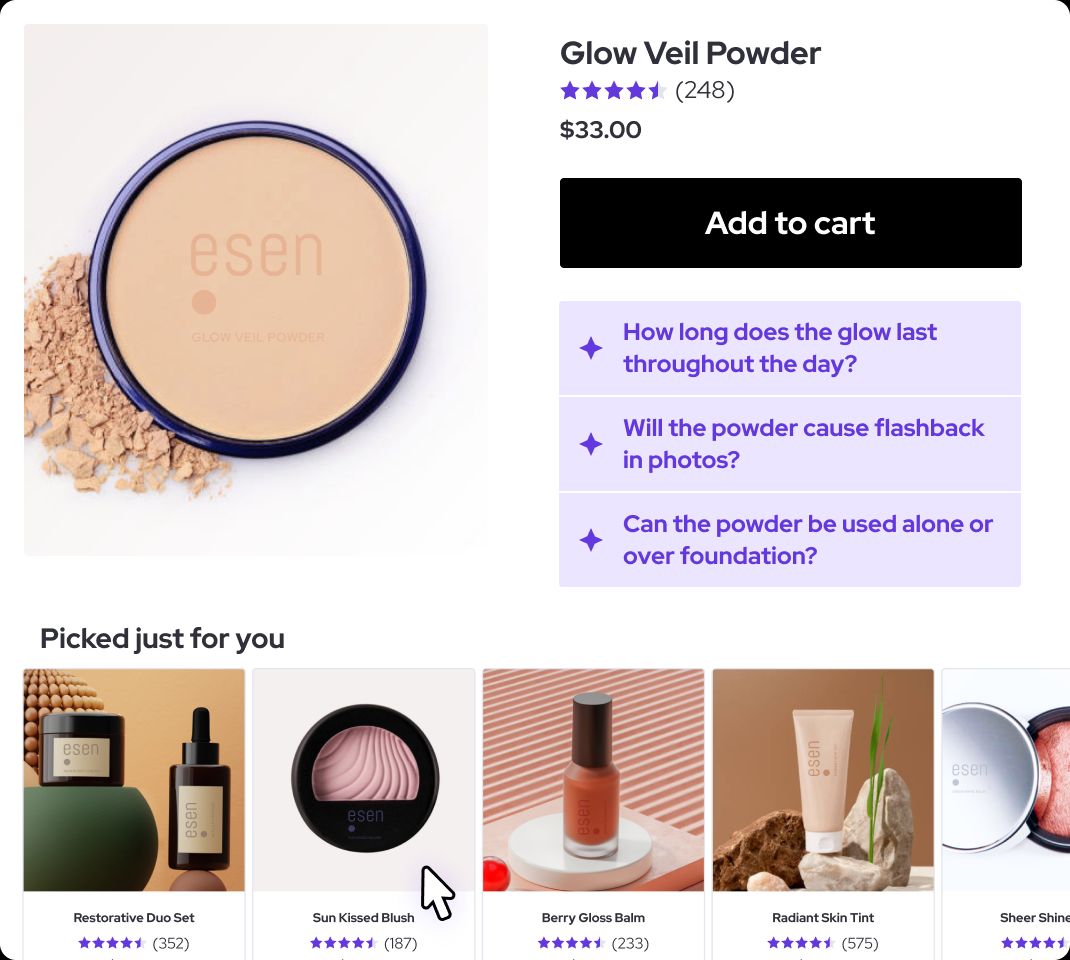
Example of Esen utilizing Big Sur AI’s (our tool) personalized product recommendations to increase their conversion rate and AOV.
Additional research shows that personalized product recommendations can improve your AOV by up to 11% with strategic cross-sells.
Wyze Utilizes AI-Powered Product Recommendations To Personalize The Customer Experience
Online retailers like Wyze are utilizing ‘’Frequently Bought Together’’ and ‘’Just picked for you’’ product modules to increase their store’s conversion rate.
The e-commerce personalization software from Big Sur AI is able to predict what customers are most likely to be interested in.
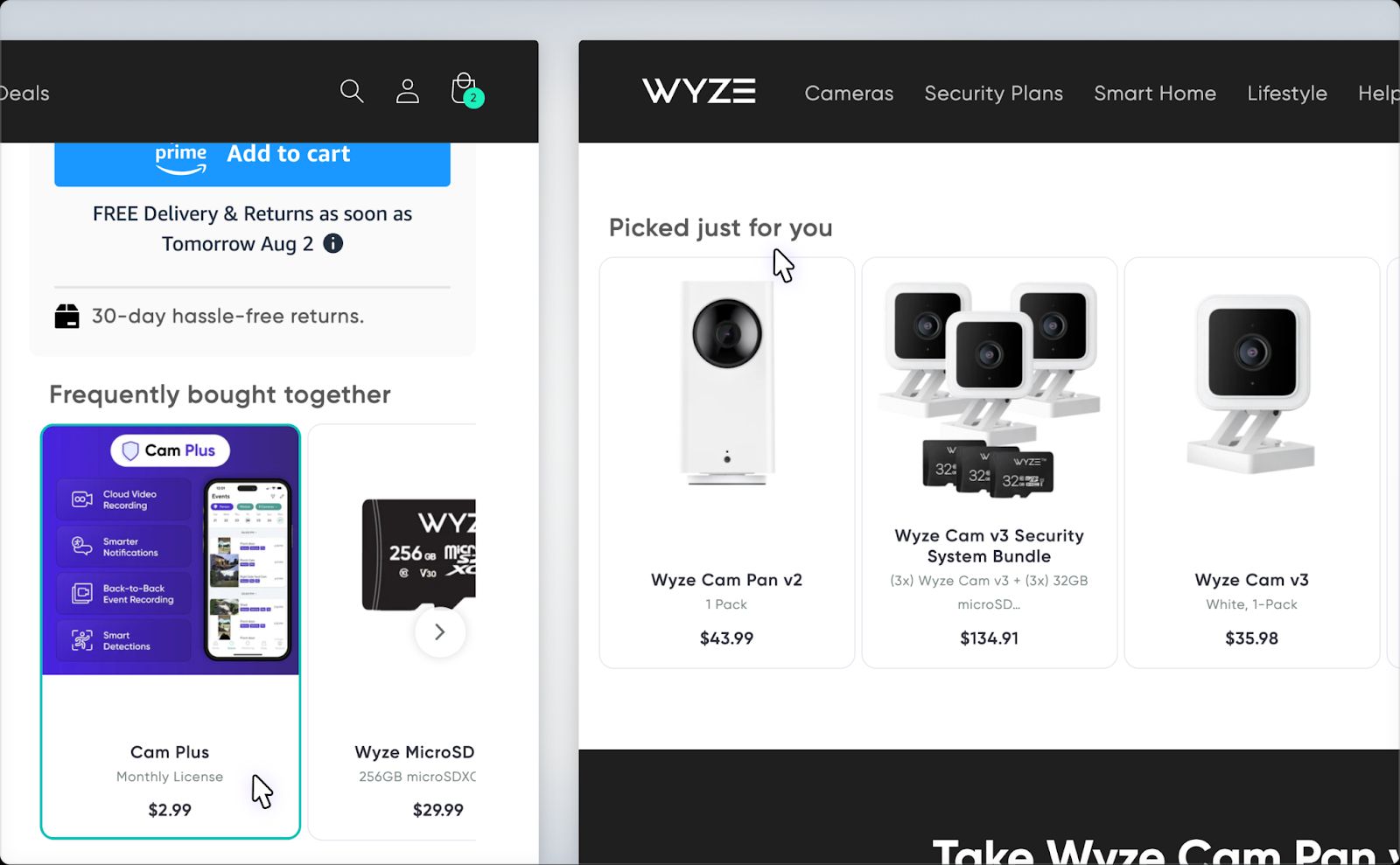
Big Sur AI makes contextual AI product recommendations based on:
- Shoppers’ engagement with your store, such as product views and buttons clicked.
- Information gathered about the shoppers.
- Questions asked by the shoppers
The product recommendation software is broken into three modules and is shown to users according to the page they’re on and how they got there:
- Picked just for you: Displays a selection of products that a customer is most likely to buy based on what we know about them.
- Frequently bought together: These recommendations appear once a shopper adds a product to their cart. They feature other products that customers typically buy based on their previous site activity.
- Top sellers: We show bestsellers in the same product category as the product a shopper is considering but show items based on the user’s gathered information.

Example 2: Dynamic Content Based on User Behavior
Online retailers are utilizing dynamic content to provide a real-time personalization experience.
Dynamic content personalization adjusts the website experience based on customer behavior in real time.
The AI algorithms use behavioral targeting to offer dynamic product recommendations, re-targeting, and a personalized user experience.
The engine gathers information as users browse through your website, analyzes their behavior, and the website personalization software refreshes the customer experience on the go.
➡️ By delivering a dynamic e-commerce personalization to your website, you can enhance the conversion rates and customer engagement, as shoppers will get a more up-to-date shopping experience.
Adidas Uses Dynamic Content For Re-Targeting Campaigns
After a customer has left a product in their cart over at Adidas and left the website, the e-commerce giant is re-targeting them on Facebook:

This allows them to hyper-personalize their re-marketing and reduce their cart abandonments.
Such a personalization strategy allows online brands like Adidas to remain top-of-mind and nudge their customers to convert.
💡 Research from Barilliance found that implementing personalized product recommendations can improve your cart abandonment by up to 4.35%.
Example 3: Tailored Email Campaigns
Personalized email marketing lets you deliver highly relevant content to different customer segments.
These targeted e-commerce emails segment users based on their past behavior, preferences, and purchasing behavior to boost open rates and conversions.
The power of AI customer segmentation in email is that you don’t need to do all the manual work of segmenting campaigns, but it is automatically done to personalize the experience.
Tools like Klaviyo enable you to set up personalized email campaigns based on customer behavior, such as abandoned cart reminders and win-back campaigns.
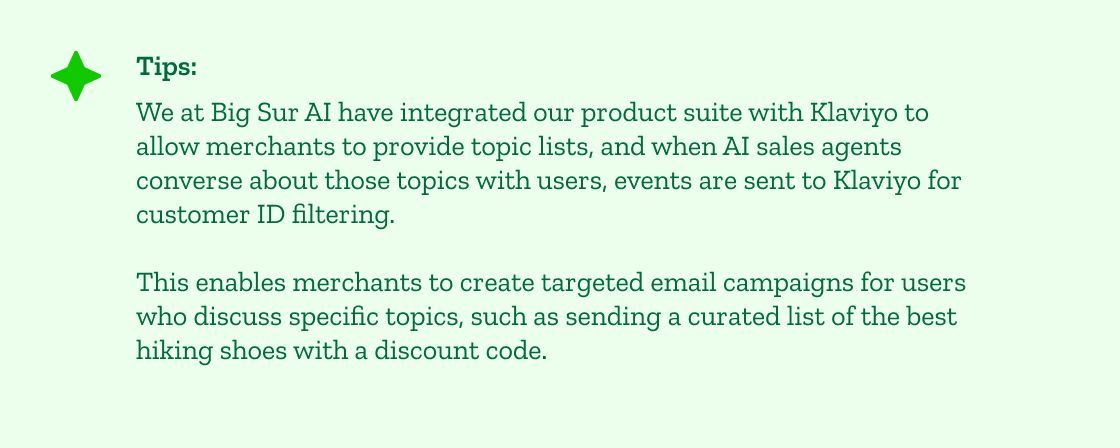
Sonos Uses Personalized ‘’Back-in-Stock’’ Emails
Online brands like Sonos are sending hyper-personalized emails that inform customers an item is back in store.
The beauty of these personalized emails is that they take into account which pages customers browsed to segment them.
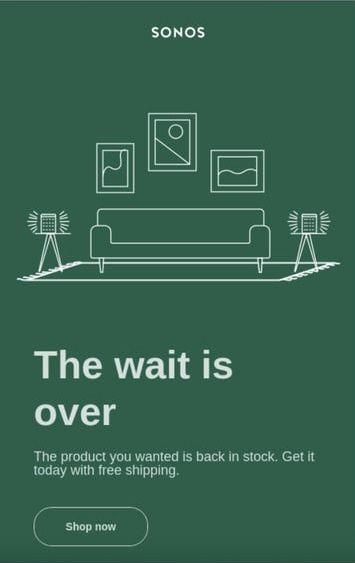
It’s the perfect example of customer segmentation at work, increasing customer loyalty and sales.
This saves consumers the time to continuously go back to the store and check if the product is in stock.
Example 4: Personalized Landing Pages
Personalized landing pages are designed to offer tailored content to your shoppers, offering products that are personalized to their interests.
These personalized e-commerce landing pages can showcase products, promotions, or custom offers.
The way it works is that brands use marketing tools to analyze the customers’ browsing history and product preferences.
➡️ Custom landing page strategies include using them in advertising or in the product discovery experience on your website.
The customized landing pages can also be built on information like geo-location and relevant demographics.
Tools like OptiMonk and Mailchimp enable online brands to build personalized landing pages manually or with AI to optimize your website’s experience.
Zara Offers Customized Landing Pages To Increase Relevance
Zara uses a targeted landing page design that is based on their customer’s browsing history and preferences.

For example, if a customer often visits men’s clothing, the landing page will feature men’s fashion items and their newest collections.
Such a level of personalization improves conversions and customer satisfaction because users are able to find what they are looking for quickly.
Example 5: Customized On-Site Search Results
You can set up an AI-powered personalized site search to improve the relevance of your site’s search results.
The way personalized search results work is that they take behavioral and transactional data into account, coupled with AI semantic search and predictive analytics.
Semantic site search understands the intent of the users and does not only match keywords to product titles.
As 87% of shoppers now begin their product search online, you can delight your shoppers with a personalized search function that can show them what they want.
E-commerce search personalization tools like Nosto offer a fully customizable site search that combines NLP, deep learning, and automations for tailored on-site search experiences.
You can utilize predictive autocomplete to guide your visitors to accurate search results by presenting a dynamic list of extended queries.
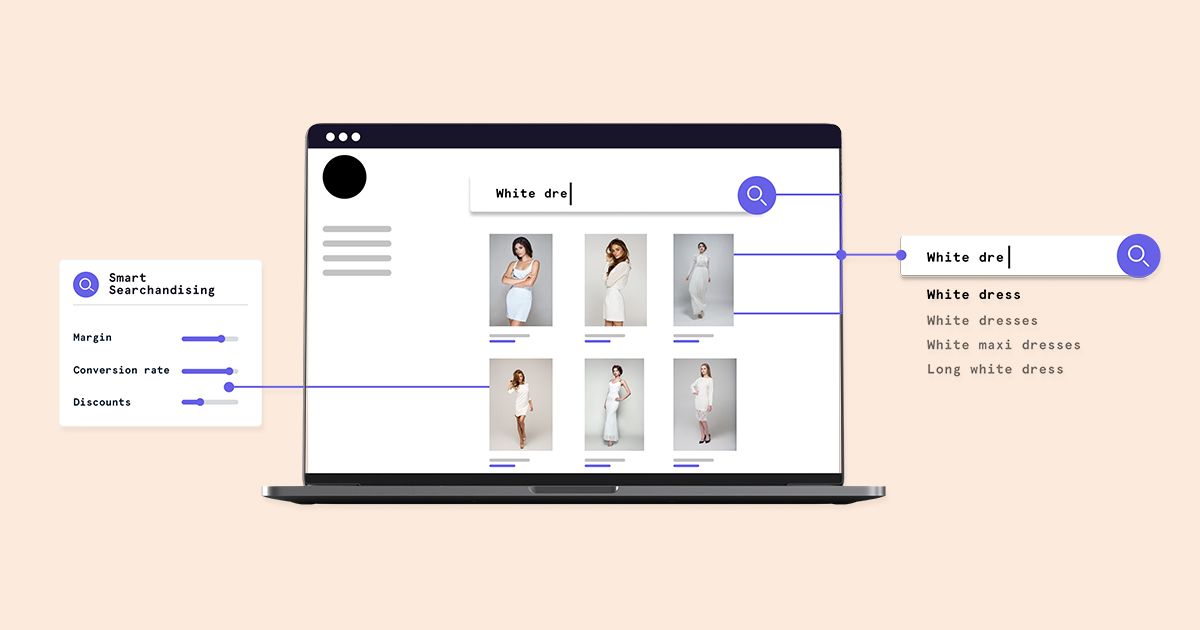
💡Case studies show that optimizing your site search can increase the conversion rate by up to 43%.
Amazon Has a 12% Conversion Rate On Their Site Search
Amazon has set up a personalized site search that converts 12% of the search users.
The brand utilizes advanced machine learning (ML) algorithms to analyze all available shopper data for each customer and personalize the site search results.

Image and data from NachoAnalytics.
Their engine takes into consideration the shoppers':
- Past purchases.
- Interactions with their services.
- Interactions with their products (e.g., what you watched on Prime Video).
The engine then uses AI-powered analytics and algorithms to recommend products the shoppers are most likely interested in.
Example 6: Geo-Targeted Personalization
Your brand can use geo-targeted personalization to personalize the content to your customers based on their geographical location.
This technique helps online brands provide relevant details, products, and experiences.
Additionally, geo-targeting enables brands to display accurate shipping times and offer free delivery to customers who live in specific locations.
➡️ Such location-based personalization improves the relevance of your website and increases your chance of converting customers.
Regional personalization is usually rules-based, as you can decide which physical locations to target campaigns or personalize the content to.
💡 You can use e-commerce geo-targeting for:
- Personalizing offers and ensuring they are in the right currency
- Speaking directly to consumers in a physical location.
- Offering free delivery, estimating the delivery time, and being precise about delivery dates.
WatchShop Set Up Geo-Targeted Pop-Ups For US Consumers
WatchShop, a UK brand, wanted to promote a special message to their visitors from the US.
After the US dollar became stronger, they tried to inform their US consumers that they now had more purchasing power.

The brand also offered free DHL delivery and a free watch adjustment to its US shoppers to drive them to convert.
Example 7: Personalized Shopping Assistance (Chatbots)
You can set up a personalized shopping assistant on your online store to offer customized customer support.
Setting up an AI-powered shopping assistant on your website is like having a traditional in-store assistant, especially useful for customers with specific product preferences.
Virtual AI assistants like Big Sur AI’s Sales Agent re-create the traditional shopping experience of asking a shopping assistant to help you choose the right product.
The tool uses natural language processing (NLP) and generative AI to converse with your customers like a real human.
Rad Power Bikes Sees A 12% Conversion Rate From The AI-Powered Sales Assistant
Rad Power Bikes offers e-bikes and bike accessories and is aware that its customers struggle to choose the right bike for their needs.
This is why they incorporated Big Sur AI’s shopping assistant in their store to assist shoppers with tailored product recommendations.
For example, shoppers can ask the AI assistant to recommend a city e-bike for a height of 6’2:
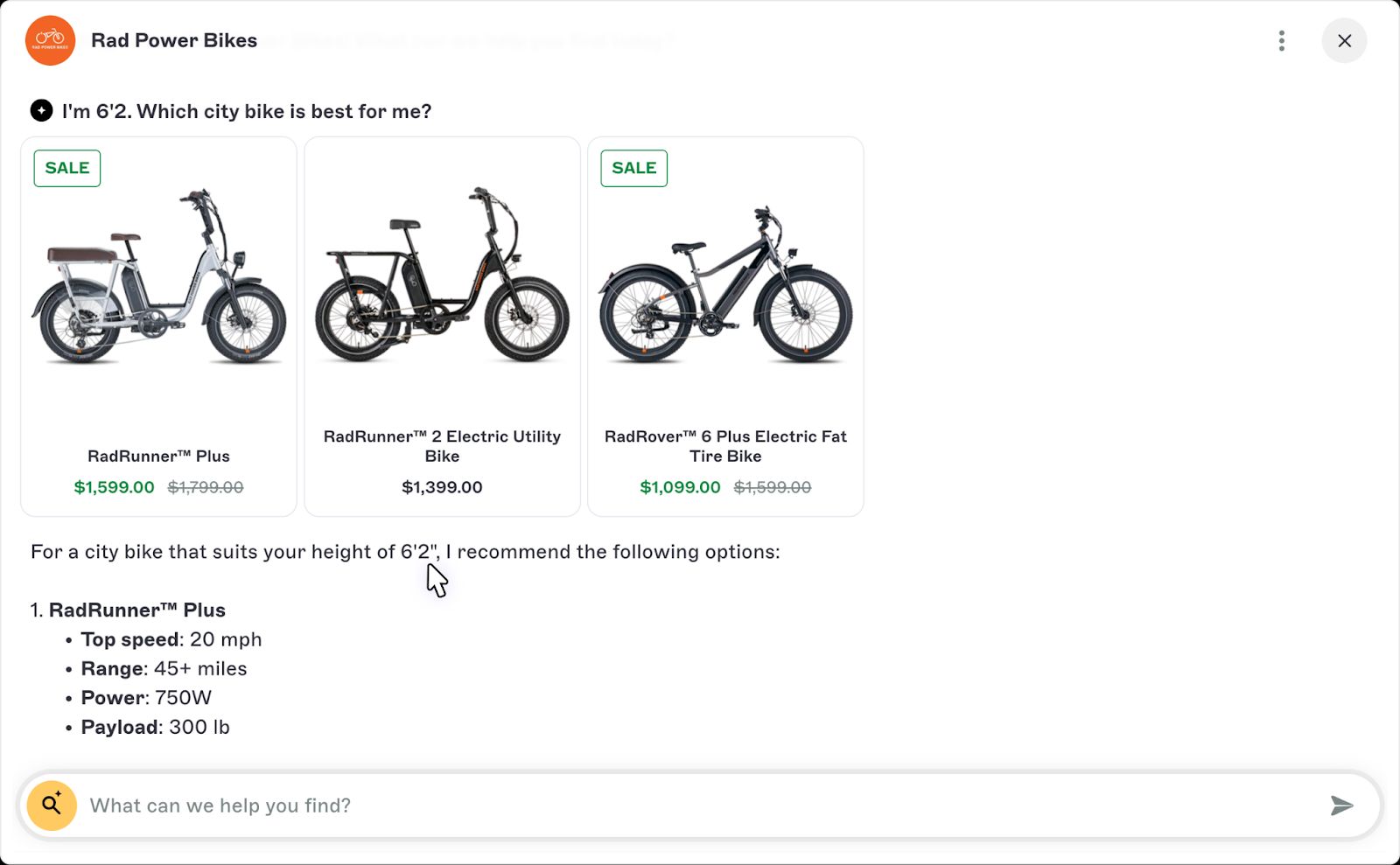
The conversion rate optimization tool was fed and trained on their store’s product information and is able to answer complex questions, not just commonly asked ones.
Since buying an e-bike is not easy, shoppers get product recommendations tailored to their attributes (e.g., budget or height).
Rad Power Bikes’ customers can even compare alternatives and get detailed breakdowns on what bike would be better suited for them.
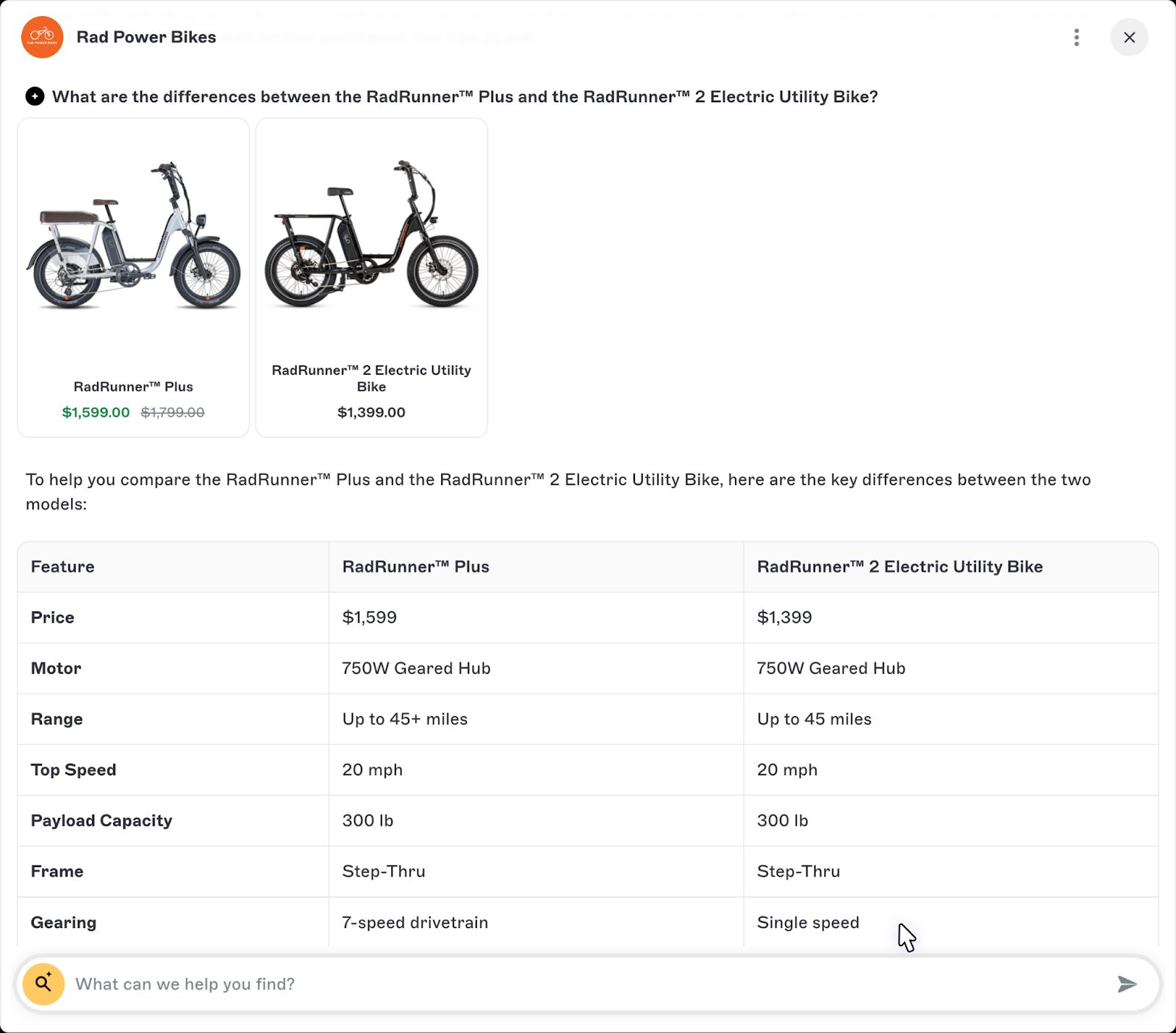
Result: The brand was able to see a 12% conversion rate of customers who interact with the AI assistant.

Example 8: Loyalty Programs with Personalized Rewards
You can set up personalized loyalty programs in your store that offer tailored rewards to customers.
These tailored customer rewards are not just generic, but they are personalized, improving conversions and customer retention.
The rewards are based on user behavior and product preferences to drive higher engagement and customer loyalty.
E-commerce personalized loyalty rewards are more appealing if they are geo-targeted as well, further improving customer experience.
H&M Offers a Personalized Loyalty Experience
H&M has stepped up its personalization efforts by creating a customer loyalty program tailored to each customer.
The H&M Membership is a digital loyalty program where customers get points on all of their shopping, both in-store and online.

The benefits that each customer receives are not generic but what each customer is likely to value.
The platform uses predictive AI to figure out what each shopper values and what is upcoming for them (e.g., a birthday) to give them tailored benefits.
Such a personalization strategy has the goal of turning casual shoppers into loyal fans of H&M, increasing customer lifetime value (LTV).
Example 9: Personalized Home Page
Personalize the customer experience from the beginning by implementing personalized home pages for your shoppers.
Home page optimization is one of the best AI use cases in e-commerce that online stores are adopting in 2024.
➡️ The way it works is that AI technology uses first-party, such as items bought so far, to offer personalized product recommendations on the home page.
It is also possible to personalize the experience of first-time visitors, which includes accessing third-party data on product preferences and interests.
Such a level of personalization enables online brands to attract and retain customers by improving their product discovery experience.
💡You can use tools like VWO to personalize the home page for each shopper.
Amazon Has Personalized The Home Page For Each Visitor
Amazon is an example of an online brand that has successfully implemented personalized home pages with the idea of offering product recommendations.
The retailer shows their users custom home pages based on their product preferences and products bought so far.

Even though Amazon has not disclosed its results, the company has reported that 35% of its sales come from such personalized recommendations.
The brand also estimates that nearly 56% of these shoppers will likely turn into repeat buyers.
Example 10: Creating a Virtual Try-On Experience
Large online retailers have recreated the traditional fitting room experience on their e-commerce websites with AI-powered virtual reality.
They are able to improve the customer shopping experience by allowing consumers to try on how well a product fits them, improving conversion rates and customer satisfaction.
It is possible to develop virtual product try-ons where shoppers can test how your products look on their bodies.
The way it works is that AI technology employs Virtual Reality (VR) that uses a customer's phone or webcam to apply a chosen item in a virtual dressing room.
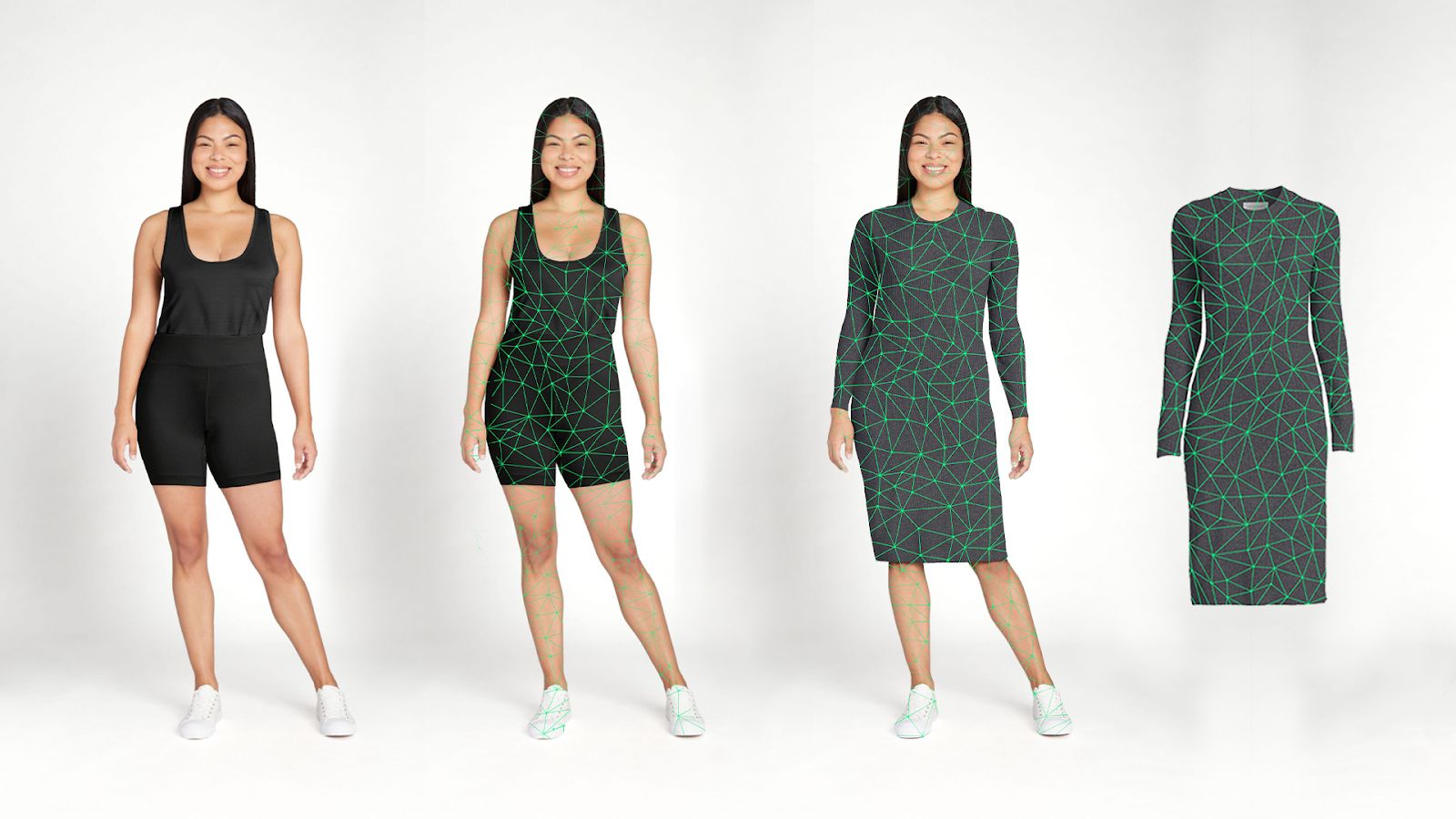
Sephora Has Implemented a Virtual Try-On Experience
Sephora created a virtual try-on experience where their customers can test make-up on their faces using their phone's camera.

The brand’s virtual try-on can also make personalized skincare recommendations tailored to each customer's face, further increasing customer loyalty.
As for the results, the brand reported a 35% increase in conversion rate and a 25% increase in add-to-basket rate following the implementation of the virtual experience.
Personalize The Product Discovery Experience With Big Sur AI
Optimize your online store with a conversational experience that works 24/7 to assist your customers.
Our AI-powered Sales Agent can personalize your customers' shopping journey with an AI shopping assistant and personalized product recommendations.
The tool also prompts customers to start more conversations, leading to more purchases and increased basket sizes.
Big Sur AI’s agent analyzes how each shopper engages with your store, predicts which questions they will likely ask, and suggests them throughout their product discovery experience.
Here’s an example from Wyze ⤵️

Your brand will also get insights into the conversion rates of each question your customers ask that leads to a conversion.
This will help your marketing team identify the crucial pre-purchase questions interested customers ask.
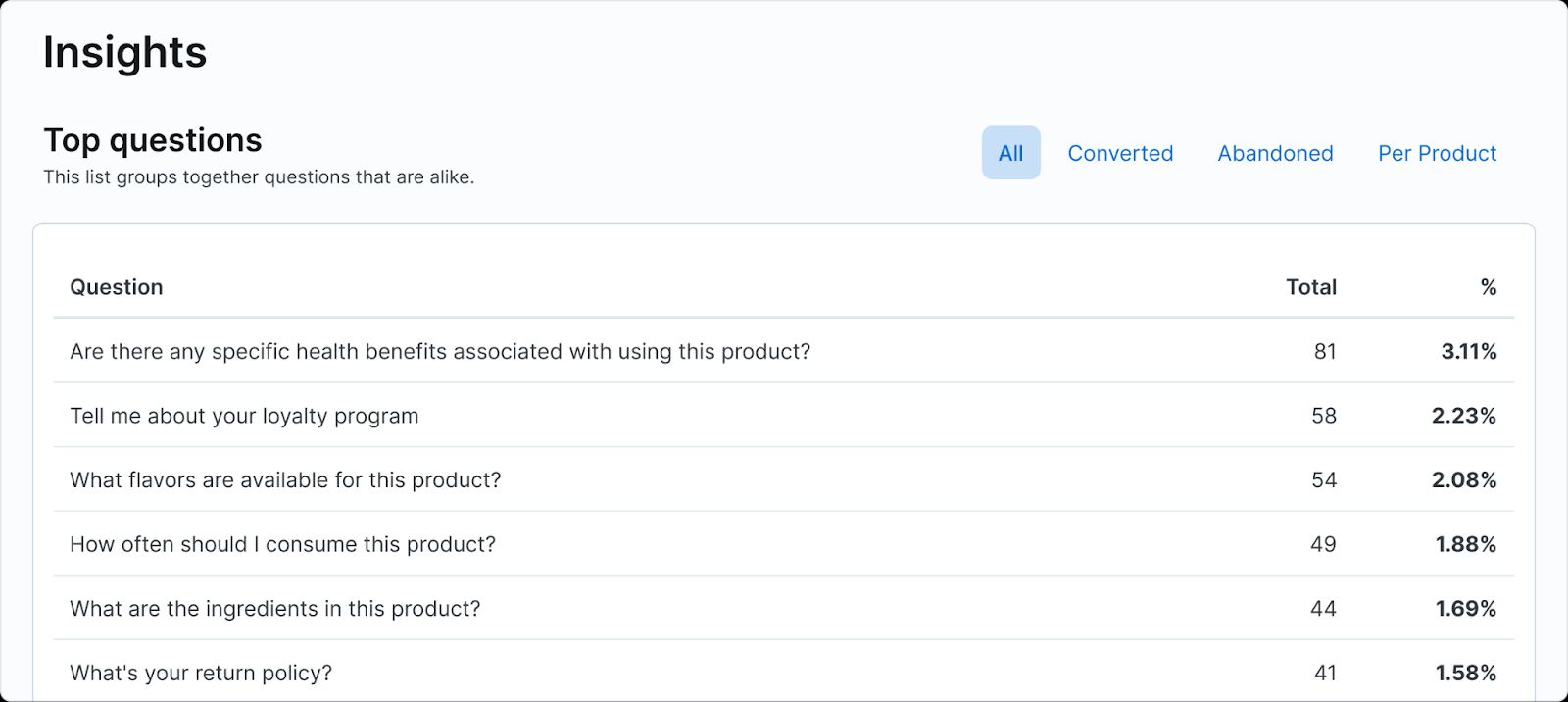
You also gain insights into what products are frequently bought together, which can help you improve your store’s shopping experience.

Be data-driven about what products are commonly bought together and what pre-purchase questions customers have on your website.


